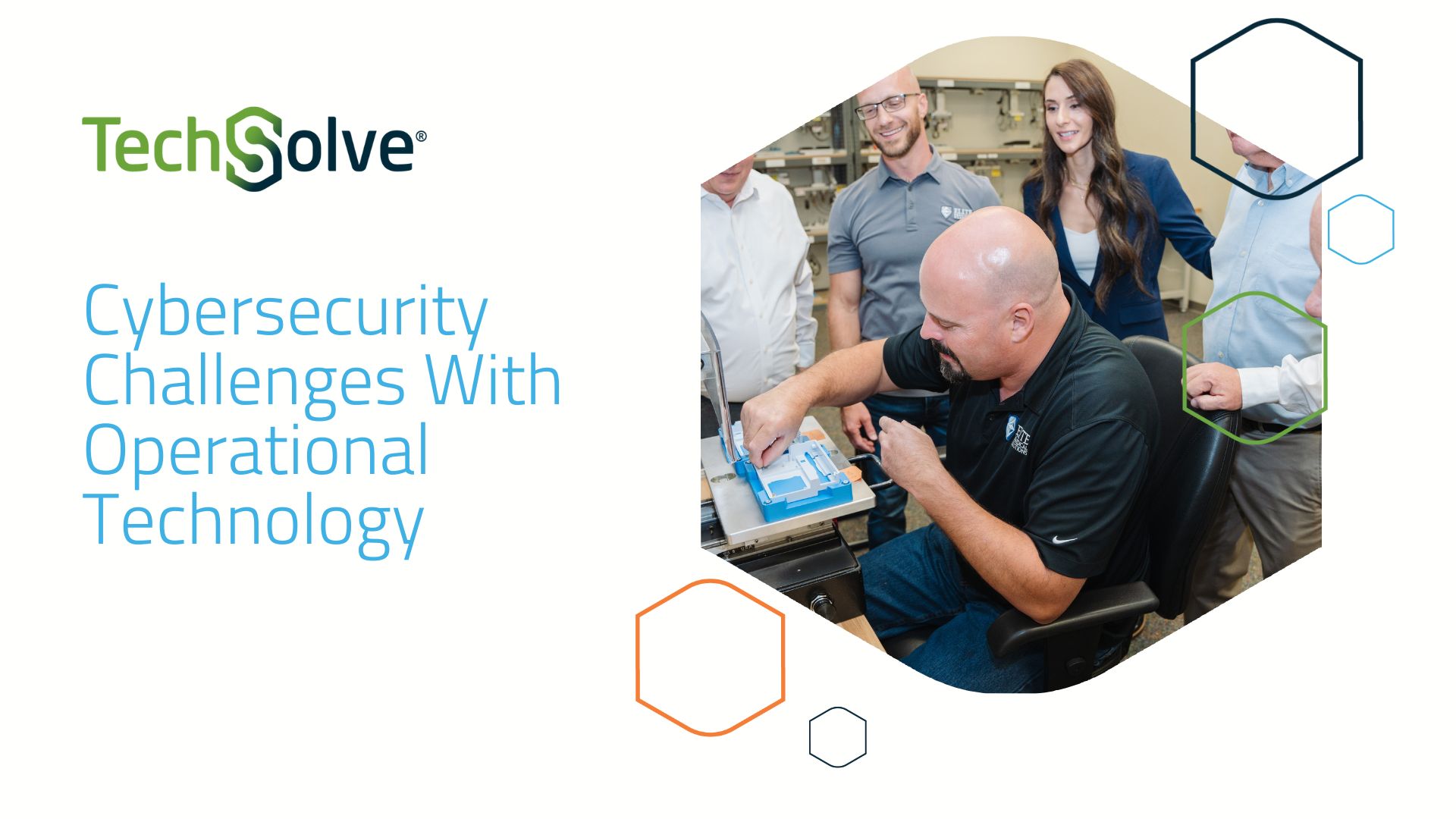OT Cybersecurity Challenges in Manufacturing

Manufacturing is evolving rapidly, with the digital transformation enhancing efficiency, productivity, and real-time decision-making. However, as advanced technology reshapes the industry, it also introduces new vulnerabilities, expanding the cybersecurity risk landscape for manufacturers.
Understanding the intersection of Information Technology (IT) and Operational Technology (OT) is crucial—not only for optimizing production but also for protecting critical systems from cyber threats. Manufacturers must take a proactive approach to cybersecurity to prevent costly disruptions, safeguard data, and maintain operational continuity.
Understanding the Distinction Between IT and OT
In the world of manufacturing, distinguishing between IT and OT is fundamental.
- IT focuses on data management and information systems, enabling businesses to store, process, and analyze data efficiently.
- OT involves the hardware and software that manage physical devices and industrial processes.
The convergence of IT and OT offers significant benefits, including improved data visibility, optimized production processes, and predictive maintenance. Integration can lead to better machine health, improved supply chain management, and more informed decision-making.
However, this increased connectivity exposes critical OT systems, which were often designed with safety and reliability in mind rather than security, to a wider range of cyber threats. This convergence creates a larger attack surface and requires a unified security approach. As a manufacturer, you want to ensure that while systems are optimized for efficiency, they are also fortified against potential vulnerabilities.
Keep in mind that traditional security measures designed for IT may not suffice in protecting OT environments. A successful cyberattack on manufacturing systems could lead to production halts or even physical damage to equipment, resulting in significant economic setbacks. The repercussions of ignoring cybersecurity in manufacturing not only affect operational continuity but can also tarnish a company’s reputation.
Five Essential OT Cybersecurity Strategies for the Shop Floor
Addressing OT cybersecurity challenges requires a multi-layered approach. Here are five key strategies manufacturers should implement:
1. Device Verification: Know What’s on Your Network
Inventory management is the foundation of cybersecurity. Regular assessments of all connected machining assets and devices—including PLCs, sensors, and HMIs—are essential to ensure that only authorized equipment has access to your network.
Strengthening security requires strict access controls and the use of network monitoring tools to detect and log all device activity. Additionally, implementing multi-factor authentication (MFA) for remote and administrative access adds an extra layer of protection against unauthorized access.
2. Data Encryption and Handling
Encrypting sensitive data — both in transit and at rest — ensures that even if data breaches occur, the information remains unreadable to unauthorized users. Organizations should establish stringent data-handling protocols to safeguard information throughout its lifecycle, applying encryption as a standard practice.
Use secure protocols (e.g., HTTPS, SFTP) for data transfer. Avoid using outdated and insecure protocols.
3. Assess Security Regularly
Conducting regular security assessments allows manufacturers to identify vulnerabilities within their systems proactively. Utilize penetration testing and vulnerability scanning to simulate potential attacks, providing valuable insights into where security improvements are needed.
Follow up with a comprehensive incident response plan to outline procedures for handling security incidents and minimizing their impact.
4. Implement Strategic Network Isolation
Isolating critical OT networks from the IT infrastructure is crucial for maintaining security. This practice limits the potential for cyber threats to spread from one network to another. Organizations should segment their networks and create firewalls to protect sensitive OT systems from external attacks. Consider using firewalls and VLANs to control traffic between segments, further enhancing security.
5. Cybersecurity Training for Staff
Unfortunately, human error remains one of the leading causes of cyber breaches. A single employee clicking on a phishing link can compromise an entire system.
Regular training sessions for employees about cybersecurity best practices can significantly reduce these risks. Employees should be equipped with knowledge on identifying phishing attempts, managing passwords effectively, and understanding the importance of maintaining security protocols.
Collaborative Defense: Building a Resilient Cybersecurity Strategy
Tackling cybersecurity challenges – whether in your IT or OT environments – requires the know how and strategic approach. Partnering with cybersecurity specialists like TechSolve provides you with the insights, tools, and tailored security strategies needed to strengthen your defenses.
As cyber threats continue to evolve, manufacturers must remain proactive. Securing IT and OT environments isn’t just about protection—it’s about ensuring long-term operational excellence and business resilience. Every step taken to fortify cybersecurity strengthens the foundation for sustainable growth in a connected world.
Don’t wait for a cyber incident to disrupt your operations: Proactively assess your security posture and fortify your manufacturing operations today. Contact us for help with cybersecurity for manufacturers.
